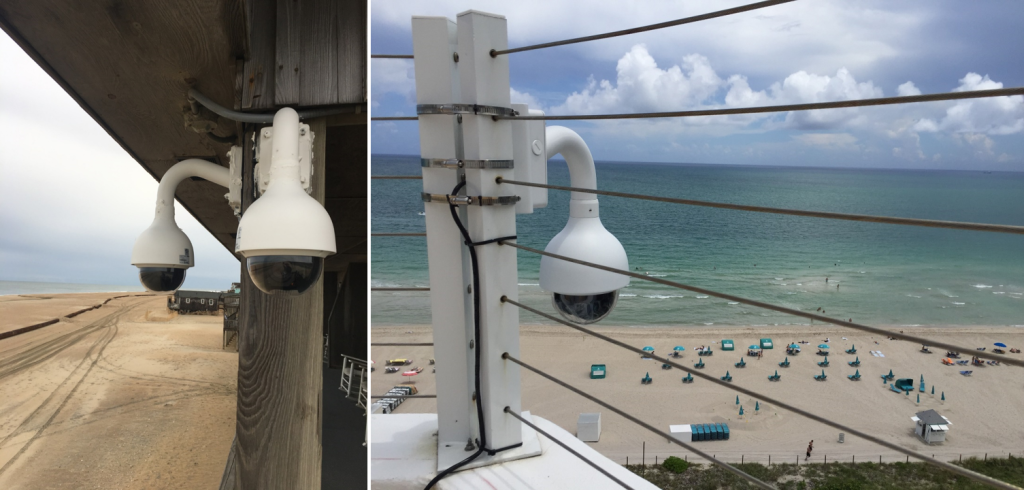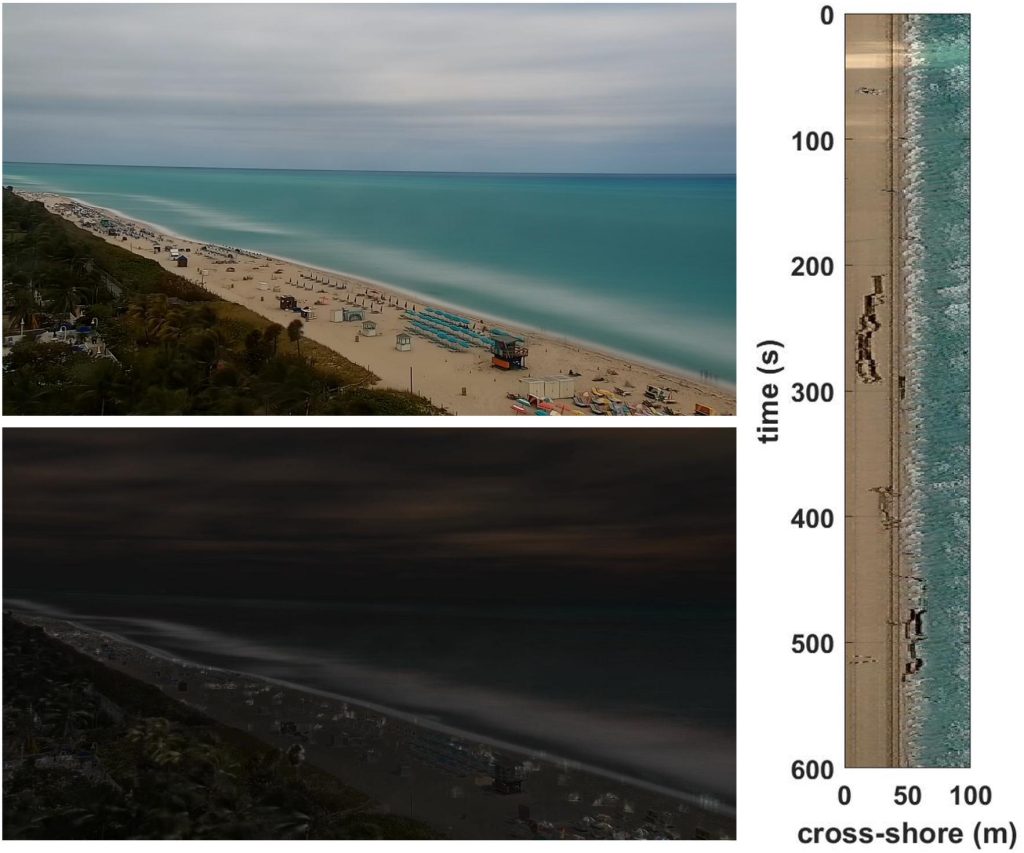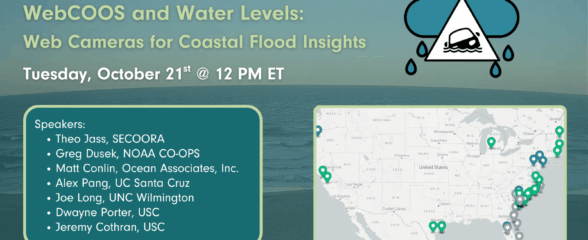
Two cameras installed for the webcam network. The left is located at Buxton, NC and the right is located in Miami, FL. Image Credit: Surfline, Inc.

Example of a product using web camera data. Time-average (top), time-variance (bottom) and time-stack (right) images are calculated from video segments from the Miami, FL camera. These products support identification of morphological features, shoreline position and wave runup and overwash. Credit: Dusek et al., 2019.
SECOORA was recently awarded a $1.1 million grant to launch a sustained network of low-cost webcams throughout the Southeast, which will build off of a successful pilot project. Webcams are a low cost coastal observing platform transforming how environmental monitoring is conducted. Video data is being used for applications related to transportation and commerce, preparedness and risk reduction, and stewardship of coastal resources.
The project, Webcams for Coastal Observations and Operational Support (WebCOOS), will develop a webcam coastal observing network for quantitative scientific analysis, public safety, and resource management for coastal municipalities. To accomplish this, standardized data processing and management methodology will be established to provide stakeholders such as lifeguards, emergency managers, and coastal managers actionable information from webcam video.
“SECOORA is excited to be awarded NOAA funding to transition our successful pilot project, the Web Camera Applications Testbed, to a sustained network. Webcam data has demonstrated value to address significant gaps in the nation’s ability to monitor and accurately forecast various weather, ocean, ecological and public health hazards.”
– Debra Hernandez, SECOORA Executive Director
This project will result in immediate benefits to partners by filling gaps in critical coastal observations. For instance, webcam data will help NOAA validate and improve their rip current forecast model, and USGS relies on webcam observations of wave run-up for research on beach erosion, overwash, and inundation. In both of these cases and others, there are extremely limited coastal observations available to address these needs.
Project Funding
This project is funded by the NOAA U.S. Integrated Ocean Observing System’s (IOOS®) Ocean Technology Transition grant.
Project Partners
Related news

SECOORA Webinar | WebCOOS and Water Levels: Web Cameras for Coastal Flood Insights
On October 21st at 12 PM ET, SECOORA is hosting a webinar with investigators from the Webcam Coastal Observation System (WebCOOS) project team and the WebCOOS Project Manager. Web cameras are a low-cost technology that can be used to document flooding impacts to coastal communities. Register here.

SECOORA Funding Opportunity Announcement: Letters of Intent Solicitation
SECOORA will submit a coordinated regional proposal in response to the anticipated FY 2026 Implementation of the U.S. Integrated Ocean Observing System (IOOS) funding opportunity. Letters of Intent to be considered for inclusion in SECOORA’s full proposal are due September 9, 2025.

SECOORA Hosts the First Surface Elevation Table (SET) Community of Practice Virtual Workshop
The SECOORA SET Workshop was virtual on July 17, 2025. More than 50 Community of Practice members and stakeholders joined this collaborative workshop to discuss SET monitoring, coastal resilience, and data-driven decision making in the Southeast.